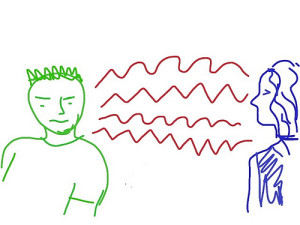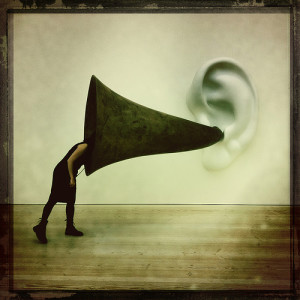You all know this: very often when speaking to other people, we only pay attention to the verbal clues that are given to us but not to the non-verbal ones. Very bad habit! I am sure you will be surprised but as already discussed in an earlier post, the verbal aspect in communications only accounts for 7 % (hence the content of what you are saying) when it comes to the relevance in terms of understanding information, thus to effectively communicating.
- 38 % on the other hand come from the paraverbal aspect of communication (intonation, cadence, volume or pace) and
- 55 % from the non-verbal aspects.
 So when meeting somebody for the first time or when in a situation of negotiation, take a moment to see how confident your counterpart is.
So when meeting somebody for the first time or when in a situation of negotiation, take a moment to see how confident your counterpart is.
Typical things to look for in confident people include:
- Posture – standing tall with shoulders back.
- Eye contact – solid with a “smiling” face.
- Gestures with hands and arms – purposeful and deliberate.
- Speech – slow and clear.
- Tone of voice – moderate to low.
But be careful! As well as deciphering other people’s body language, you could also use this knowledge to convey feelings that you’re not actually experiencing…
Difficult meetings and defensiveness
Some of the common signs that the person you are speaking with may be feeling defensive include:
- Hand/arm gestures are small and close to his or her body.
- Facial expressions are minimal.
- Body is physically turned away from you.
- Arms are crossed in front of body.
- Eyes maintain little contact, or are downcast.
By picking up these signs, you can change what you say or how you say it to help the other person become more at ease, and more receptive to what you are saying.
Working with groups and disengagement
Some of the typical signs and signals of people not being engaged. Some of these signs and signals include:
- Heads are down.
- Eyes are glazed, or gazing at something else.
- Hands may be picking at clothes, or fiddling with pens.
- People may be writing or doodling.
- They may be sitting slumped in their chairs.
And finally, a tip:
To help practice and further develop your skill in picking up body language, engage in people watching. Observe people – be that on a bus/train or on television without the sound – and just notice how they act and react to each other. When you watch others, try to guess what they are saying or get a sense of what is going on between them!












